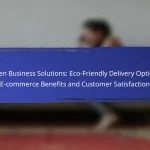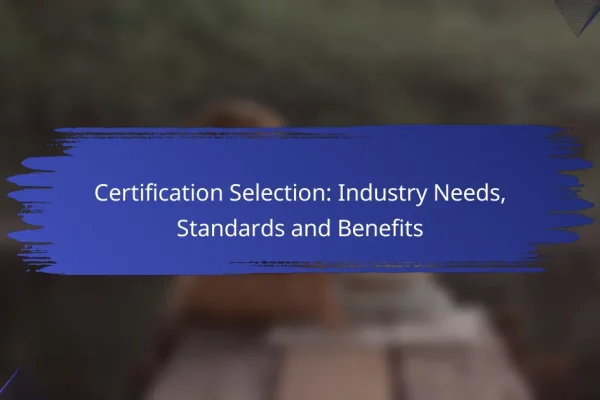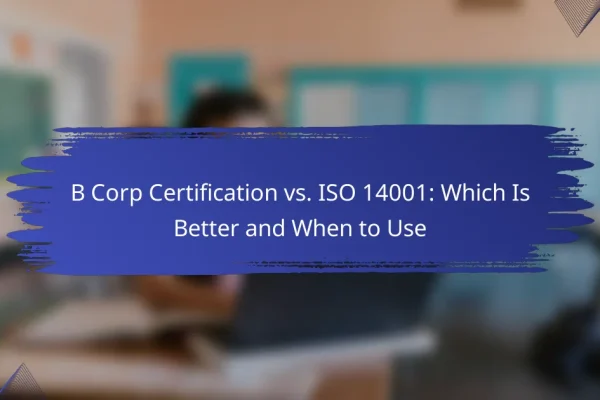What are the benefits of green certifications for businesses?
Green certifications offer numerous advantages for businesses, including improved credibility, access to new markets, and potential cost savings. By demonstrating a commitment to sustainability, companies can enhance their reputation and attract a growing segment of eco-conscious consumers.
Enhanced brand reputation
Achieving green certifications can significantly enhance a company’s brand reputation. Customers increasingly prefer to support businesses that prioritize environmental responsibility. Certifications from recognized organizations can serve as a badge of honor, signaling to consumers that the company adheres to high sustainability standards.
Moreover, a strong reputation for sustainability can lead to positive media coverage and increased customer loyalty. Businesses that actively promote their green initiatives often find that their brand is associated with trust and quality.
Access to new markets
Green certifications can open doors to new markets that prioritize sustainability. Many government contracts and corporate partnerships now require vendors to have specific environmental certifications. This can provide businesses with a competitive edge in bidding for projects.
Additionally, entering markets focused on sustainability can lead to collaborations with other eco-friendly brands, expanding a company’s reach and influence. Companies may also find opportunities in sectors such as renewable energy, sustainable agriculture, and green technology.
Cost savings through efficiency
Implementing sustainable practices often leads to cost savings through increased efficiency. Businesses that pursue green certifications typically assess their operations, identifying areas where they can reduce waste and energy consumption. This can result in lower utility bills and reduced material costs.
For example, companies may invest in energy-efficient equipment or optimize their supply chain processes, which can yield significant savings over time. These improvements not only benefit the bottom line but also contribute to a more sustainable business model.
Attraction of eco-conscious customers
Eco-conscious consumers are increasingly seeking out businesses that align with their values. Green certifications can help attract this demographic, as they provide assurance that a company is committed to environmental stewardship. This can be particularly important in industries such as food, fashion, and home goods.
To effectively reach eco-conscious customers, businesses should actively promote their certifications and sustainability efforts through marketing channels. Engaging storytelling about the company’s green initiatives can resonate well with this audience, fostering deeper connections and encouraging repeat business.
Which green certifications are most recognized in the US?
The most recognized green certifications in the US include LEED, Energy Star, and ISO 14001. These certifications help businesses demonstrate their commitment to sustainability and environmental responsibility, often leading to cost savings and improved public perception.
LEED Certification
LEED, or Leadership in Energy and Environmental Design, is a globally recognized certification for green buildings. It evaluates the environmental performance of a building and encourages market transformation towards sustainable design.
To achieve LEED certification, projects must meet specific prerequisites and earn points across various categories, such as energy efficiency, water usage, and materials selection. There are different levels of certification: Certified, Silver, Gold, and Platinum, depending on the total points earned.
Energy Star Certification
Energy Star certification is a program that identifies products and buildings that meet strict energy efficiency guidelines set by the U.S. Environmental Protection Agency (EPA). This certification helps consumers identify energy-efficient options that can save money on utility bills.
To qualify for Energy Star, buildings must perform in the top 25% of similar facilities nationwide in terms of energy efficiency. Regular energy audits and improvements are essential to maintain this certification, which can also enhance a company’s reputation for sustainability.
ISO 14001 Certification
ISO 14001 is an international standard that specifies requirements for an effective environmental management system (EMS). It helps organizations improve their environmental performance through more efficient use of resources and reduction of waste.
Achieving ISO 14001 certification involves a systematic approach to managing environmental responsibilities, including setting objectives, monitoring performance, and continual improvement. Companies often find that this certification not only helps with compliance but also boosts operational efficiency and stakeholder trust.
How can businesses obtain green certifications?
Businesses can obtain green certifications by following a structured process that includes assessing current practices, implementing sustainable methods, and completing the certification application. This process not only enhances environmental responsibility but can also improve brand reputation and customer loyalty.
Assessment of current practices
The first step in obtaining green certifications is to evaluate existing business practices. This involves identifying areas where resources are used inefficiently, such as energy consumption, waste management, and supply chain processes.
Conducting a thorough audit can help pinpoint specific practices that need improvement. Utilizing tools like sustainability assessment frameworks can provide a clear picture of where a business stands in terms of environmental impact.
Implementation of sustainable practices
After assessing current practices, businesses should implement sustainable practices tailored to their operations. This may include adopting energy-efficient technologies, reducing waste through recycling programs, and sourcing materials from sustainable suppliers.
It’s essential to set measurable goals and timelines for these initiatives. For example, a business might aim to reduce energy consumption by 20% over two years or switch to 100% recyclable packaging within a year.
Application process for certification
The application process for green certification typically involves submitting documentation that demonstrates compliance with specific environmental standards. This may include evidence of sustainable practices, audit results, and a commitment to ongoing improvement.
Many certifications require a fee and may involve an on-site evaluation by certifying bodies. Businesses should prepare for this by ensuring that all documentation is accurate and readily available, as well as being open to feedback for further improvements.
What are the costs associated with green certifications?
The costs associated with green certifications can vary widely depending on the type of certification, the size of the business, and the specific requirements involved. Businesses should anticipate expenses related to certification fees, consultation and training, as well as ongoing compliance costs.
Certification fees
Certification fees are the primary costs associated with obtaining green certifications. These fees can range from a few hundred to several thousand dollars, depending on the certifying body and the complexity of the certification process. For example, certifications like LEED or ISO 14001 may have higher fees due to their rigorous standards.
It’s essential to research different certification options and their associated fees to find the best fit for your business. Some organizations offer tiered pricing based on company size or revenue, which can help smaller businesses manage costs more effectively.
Consultation and training costs
Consultation and training costs are often necessary to prepare for certification. Hiring a consultant can help navigate the certification process, and fees for their services can range from a few hundred to several thousand dollars, depending on the scope of work. Training sessions for staff may also incur costs, typically around a few hundred dollars per session.
Investing in training can enhance employee understanding of sustainability practices, which is crucial for maintaining compliance. Consider group training sessions to reduce costs and foster team collaboration.
Ongoing compliance expenses
Ongoing compliance expenses are costs incurred to maintain certification status after initial approval. These can include regular audits, documentation updates, and additional training sessions. Businesses should budget for these recurring expenses, which may amount to several hundred dollars annually.
To minimize ongoing costs, implement efficient processes and maintain thorough records. This proactive approach can help avoid costly penalties and ensure continued compliance with certification standards.
What are the prerequisites for obtaining green certifications?
To obtain green certifications, businesses must demonstrate a commitment to environmentally friendly practices and provide thorough documentation of their sustainability efforts. These prerequisites ensure that companies are genuinely engaged in reducing their environmental impact.
Commitment to sustainability
A strong commitment to sustainability is essential for obtaining green certifications. This involves integrating eco-friendly practices into the core operations of the business, such as reducing waste, conserving energy, and sourcing sustainable materials. Companies should establish clear sustainability goals and regularly assess their progress towards these objectives.
For example, a business might aim to reduce its carbon footprint by a specific percentage over a set timeframe. This commitment should be communicated to employees and stakeholders to foster a culture of sustainability throughout the organization.
Documentation of practices
Thorough documentation of sustainable practices is critical when seeking green certifications. Businesses must keep detailed records of their environmental initiatives, including energy usage, waste management strategies, and sourcing policies. This documentation serves as evidence of compliance with certification standards.
Common documentation includes sustainability reports, energy audits, and waste disposal records. Companies should also track their progress over time, as this data can help identify areas for improvement and demonstrate ongoing commitment to sustainability during the certification process.












